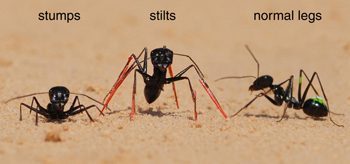Up until this point in my education I’ve always thought of maths as a subject full of equations, difficult strategies and complicated rules. Especially in higher maths at school is was a constant routine of go to class, be taught a new subject for half the lesson with vigorous note taking and then the second half of the lesson would be textbook work. To make matters worse if you didn’t finish the textbook work you had to do it as additional homework…so from my point of view there was very little if not no creativity for the most part of my mathematical education in high school. The early years of primary school is probably where creative maths would be found, but I know what I learnt in my lecture today couldn’t be taught to a 6 year old and I think the more advanced maths is better used with creativity as it’s more of an “ah ha” moment.
In my Discovering Maths lecture today I was able to see how creativity is in maths all around us. Artists throughout history have used such maths topics as symmetry, tessellation and proportion. Ancient Greek architects and sculptors used the golden ratio (I’ll speak more about this in another blog!) to make sure that buildings were physically nice to look at. Portrait painters form the renaissance period made sure that proportions of their portraits facial features and head were in proportion to the rest of their body, to do this they followed mathematical ratios. Tessellations and geometric shapes are seen in Islamic art and represents spirituality of the world.
What are tessellations you ask? A tessellation is a pattern of shapes that fit perfectly together, with no gaps, and create a pattern that could repeat for infinity and beyond.

Islamic art avoids the use of human figures or animals in their art. But rather has three principle elements which they include in each piece. These are:
- Calligraphy
- Arabesque
- Geometry

Sacred Geometry gives symbolic meanings to types of geometric proportions/shapes. it is also associated with the belief that “god is the geometer of the world” (Sacred geometry, 2017). Geometry is said to be at the heart of nature, it is seen in all of nature if you look close enough, and therefore makes us all develop so beautifully. And so it is at the heart of Islamic art. “In the world of natural phenomena, it is the underlying patterns of geometric form, proportion and associated wave frequencies that give rise to all perceptions and identifications. Therein lies our fundamental capacity to relate, to interpret and to know.” (Bansal, 2014). Aspects of nature that geometry can be seen in is honeycombs, spirals in flowers, pine cones, foliage on trees etc. Nature’s design links to the golden ratio, divine proportion, phi and consciousness. The chambered nautilus grows constantly and its shell creates a logarithmic spiral shape and hold the growth without the shell changing its shape, this shape links to the golden ratio which we will learn more about later on (Crystal, no date).


‘The seed of life’ is a concept relating to flower patterns. Within the flowers geometry we start with the seed which includes 6 circles interlinked together which creates with perfect pattern that you may see used in company logos. Once the see germinates it starts to turn into a flower and the geometry continues by adding a further 6 circles, turning the pattern into 12 interlinked circles. This is an fascinating design from natures basic friend, the flower. These patterns are universal in nature and if you were to go to another universe or planet you’d find similar if not the same pattern there too! (McConaghay, 2016).


Within Islamic art there are three fundamental shapes used:
- Equilateral triangle –
This is the simplest shape to draw and fit together and it represents harmony and human consciousness.
- Square –
Also an easy shape that fits together and it represents the four corners of the earth.
- Hexagon –
This shape represents heaven.
The star whether it is a 6, 8, 10 or 12 pointed star is also often used in Islamic art.

From this lecture/workshop we got to be fully creative with paints, coloured paper and a load of cutting out (being safe with the scissors at all times!). We made our own versions of tessellations which all turned out very pretty if i may say so myself.

Me, myself am a very creative person in general. I dance, play a musical instrument and took art all the way up to advanced higher at school, therefore my classroom in the future won’t be short of creativity and a splash of colour and art in all aspects of learning!
References:
McConaghay, D. 2016. [Website] Available at: https://www.gaia.com/article/sacred-geometry-nature. (Accessed 02/11/17).
Crystal, E. no date. [Website] Available at: http://www.crystalinks.com/sg.html. (Accessed 02/11/17).
Bansal, A. 2014. [Website] Available at: http://www.archinomy.com/case-studies/1938/geometry-nature-architecture. (Accessed 02/11/17).
Sacred Geometry. (2017). [Website] Available at: https://en.wikipedia.org/wiki/Sacred_geometry. (Accessed 02/11/17).

